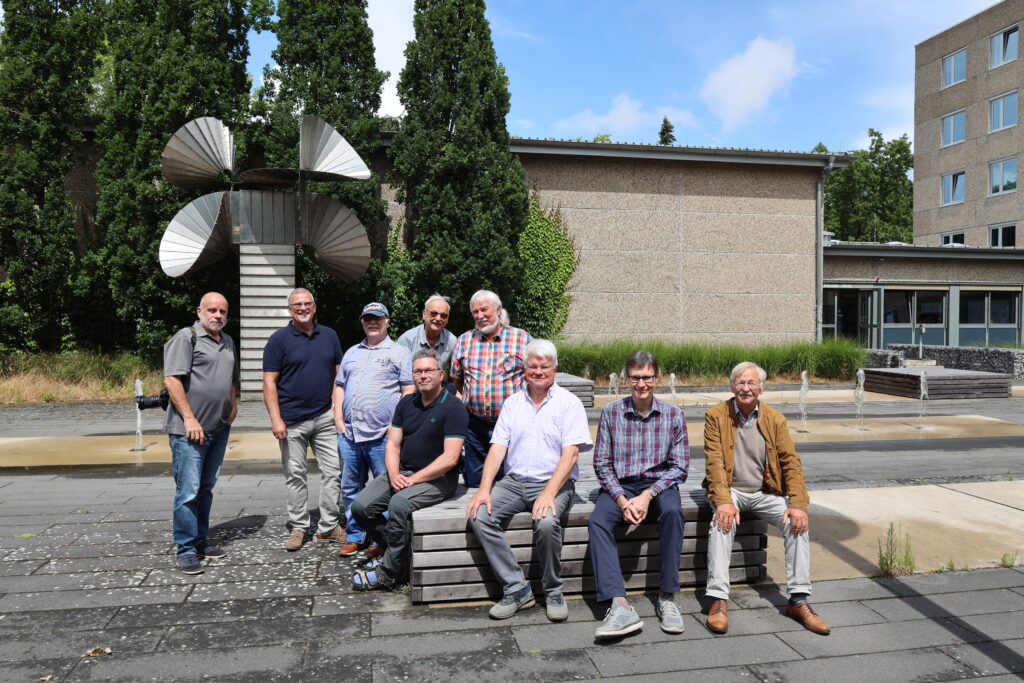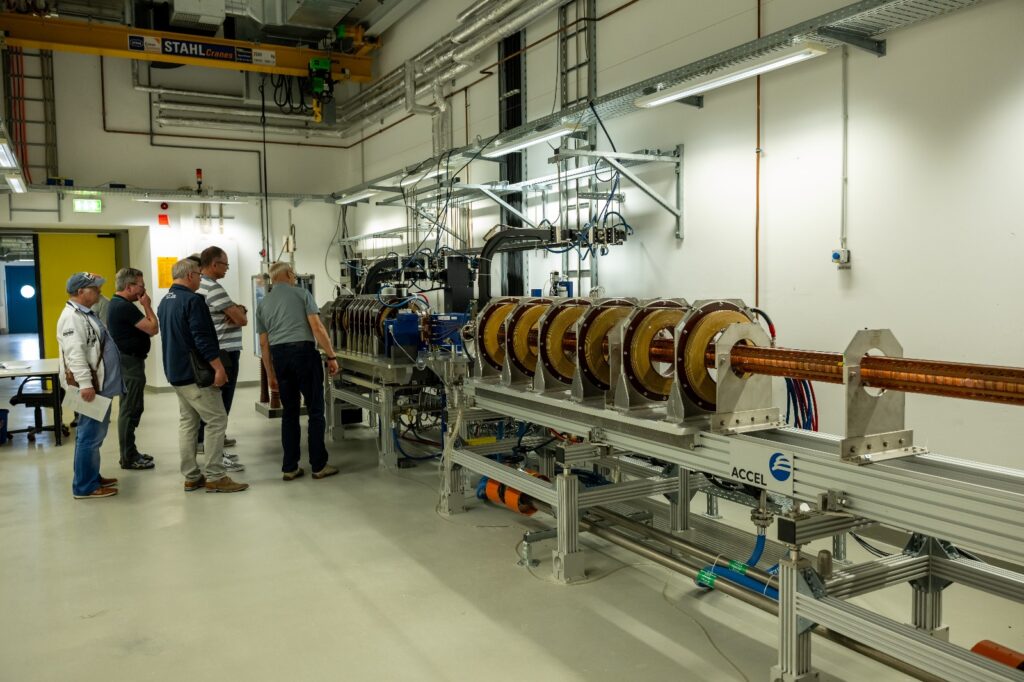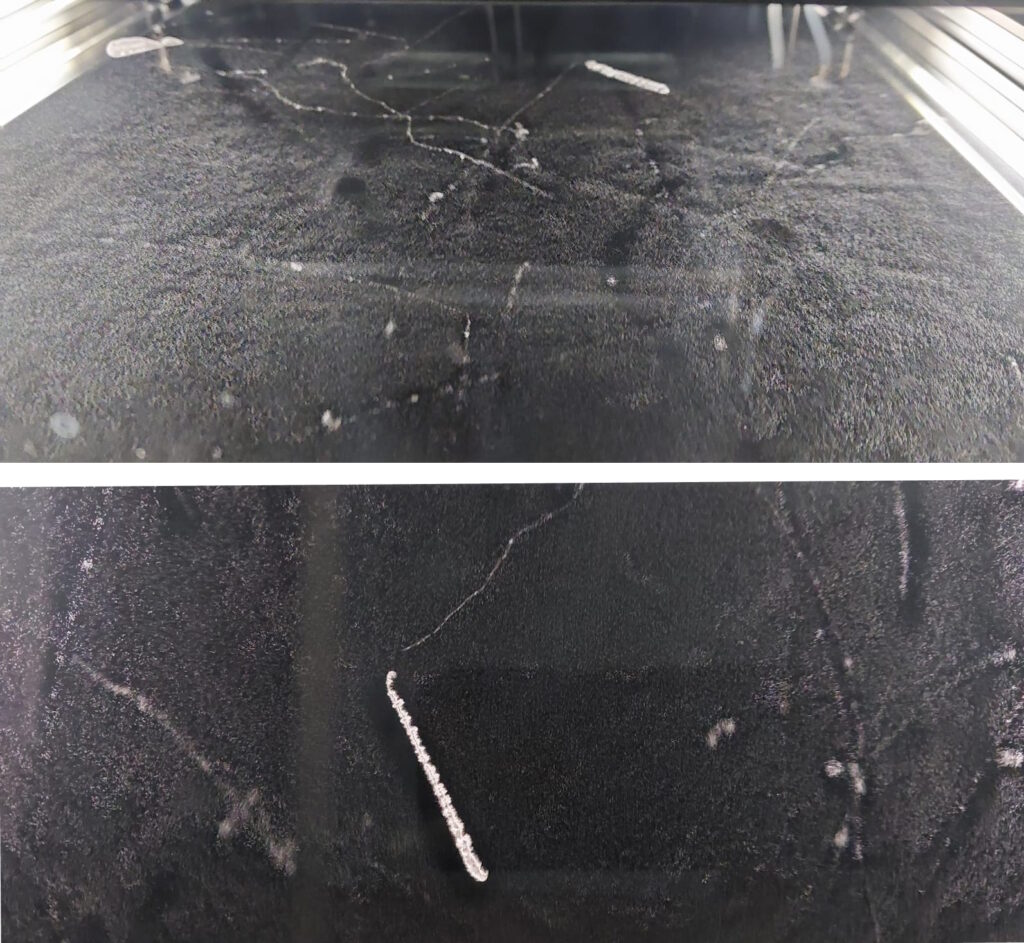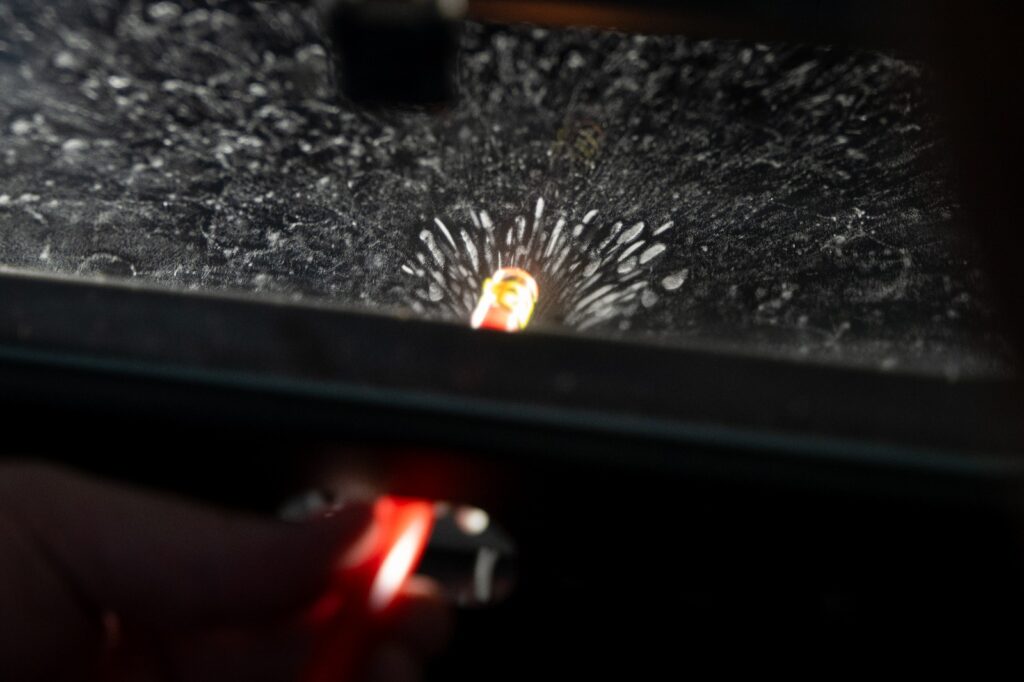Meter, kilogram, second, ampere, mole, kelvin and not to forget candela. These are the units of measurement of the International System of Units (SI – Système international d’unités [1]). Almost every one of them has been encountered by an astronomer at some point, whether in the characterization of stars (size, mass, distance, luminosity), in the explanation of the causes of atmospheric luminous phenomena on Earth or on other planets (northern lights, radiation belts) or in the interstellar gas clouds that glow in many colors.
Considering this, it's easy to see why the Physikalisch-Technische Bundesanstalt (PTB) in Braunschweig [2], one of the most important international metrology institutions, is an attractive destination for one of our excursions for us at kosmos-os. Already in February 2025 we had contacted PTB and planned our visit.
On July 7, 2025, nine of us set off for Braunschweig to visit the PTB. Starting at 10:30 a.m., an interesting program prepared especially for us awaited us.

The sheer size of the facility was impressive. Approximately 1,600 people work at the Braunschweig site, the majority of whom are employed in technical and scientific fields. We were particularly impressed by the open atmosphere we encountered. We were allowed to see everything and even take photographs. All our questions were readily answered.
After a general introduction, we moved on to the area of dosimetry, where we received first-hand, up-to-date explanations of the measurement of ionizing radiation, particularly in medical applications.

This was followed by a detailed list of the natural and artificial radiation exposure of humans from ionizing radiation.
Of particular interest to us as astronomers was the cloud chamber, which used a fairly simple technique (Langsdorf's diffusion cloud chamber [3]) to visualize ionizing radiation. Alpha and beta particles were clearly visible as "contrails." We were surprised to be able to see firsthand how much natural radiation reaches us every second. The majority of it is cosmic radiation from space!

A radioactive sample of an alpha emitter then clearly showed how particles are emitted in the cloud chamber and that they can be stopped by a very thin layer of latex (latex gloves), for example – impressive!

Our last stop was "Time and Frequency." Here, the unit of time, the second, is determined with great effort and compared with other institutions around the world. Different generations of cesium atomic clocks are used for this purpose.

Today, the so-called fountain atomic clock [4] is PTB's most precise clock, and this now provides the time standard. The internationally valid and corrected time (Coordinated Universal Time UTC [5]) finally is determined after so-called leap seconds have been inserted into the International Atomic Time TAI [6], which follows the exact second cycle, because ultimately the Earth's rotation and its orbit around the sun determine the actual "time." The leap seconds are therefore determined by geodesists and astronomers (IERS) [7], thus bridging the gap between PTB's precise measurements and the precise observation of celestial bodies.
For us astronomers, this was a nice realization at the end of our interesting and impressive visit to PTB.
_____________________________________________________________________________
Sources and information:
[1] SI system of units: https://de.wikipedia.org/wiki/Internationales_Einheitensystem
[2] PTB: https://www.ptb.de
[3] Cloud chamber: https://de.wikipedia.org/wiki/Nebelkammer
[4] Fountain clock: https://www.ptb.de/cms/ptb/fachabteilungen/abt4/fb-44/ag-441/realisierung-der-si-sekunde/die-fontaenen-atomuhr-csf1-der-ptb.html
[5] Universal Time Coordinated (UTC): https://de.wikipedia.org/wiki/Koordinierte_Weltzeit
[6] International Atomic Time TAI: https://de.wikipedia.org/wiki/Internationale_Atomzeit
[7] International Earth Rotation and Reference Systems Service (IERS): https://de.wikipedia.org/wiki/Internationaler_Dienst_f%C3%BCr_Erdrotation_und_Referenzsysteme